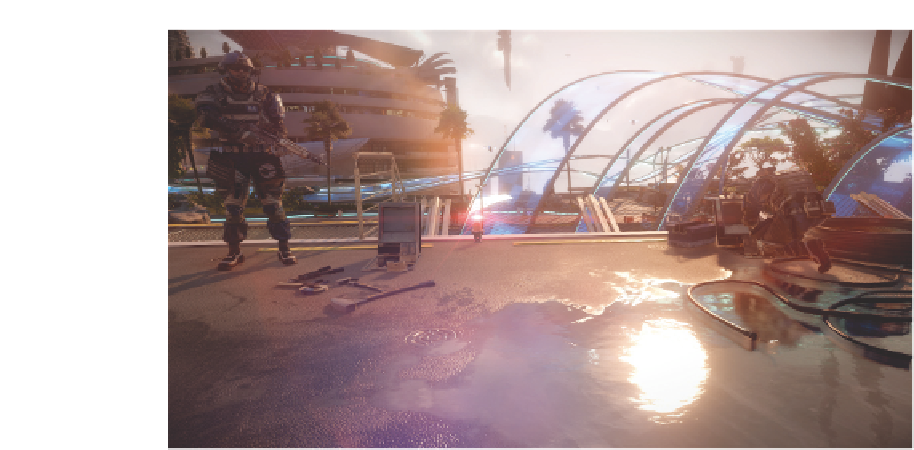Graphics Reference
In-Depth Information
Figure 1.1.
Usage of area lights in
Killzone: Shadow Fall
.
1.2 Introduction
The current game industry standard for lighting models is Blinn-Phong BRDF
or models directly based on it. In recent years we have seen multiple advances
extending the model to support more varied materials, surface properties, and
physically based properties [McAuley et al. 13] or ways to tackle aliasing prob-
lems [Baker and Hill 12]. The result of this technological push is widespread
access to an ecient, predictable, well-known lighting model, capable of captur-
ing most material properties that we might observe in common scenarios. Most
research focused on refining material interactions, including well-known geomet-
ric and fresnel terms proposed in the Cook-Torrance lighting model [Cook and
Torrance 81]. However, a very basic constraint of the model still exists, as it can
only simulate point-based lights. In almost every scenario, the source of light
has a physical size, which in real life is reflected by the correct shape of specu-
lar reflection and diffuse lighting response. Using Blinn-Phong point lighting for
dynamic lights proves inadequate in many situations, creating a visual disjoint
between visible lights in the scene and lighting result (see Figures 1.2 and 1.3).
Several methods exist to tackle this issue. Some of them include pre-computing
“light cards” or billboard reflections and raytracing them at runtime to simulate
accurate specular reflections [Mittring and Dudash 11]. Unfortunately, this sys-
tem is an addition on top of standard analytical, dynamic lighting that is point
based. Moreover, it doesn't provide a solution for area-based diffuse lighting.









